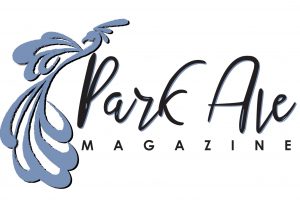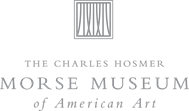On October 15, The Charles Hosmer Morse Museum of American Art will open two new exhibitions focusing on Louis Comfort Tiffany’s art pottery and the Museum’s extensive collection of archival materials related to Tiffany and his various companies.
Rare and Remarkable—Art Pottery of Louis Comfort Tiffany
Rare and Remarkable—Art Pottery of Louis Comfort Tiffany looks at Tiffany’s ceramics at a time when American art pottery enjoyed international acclaim. The Morse holds the world’s largest public collection of Tiffany pottery. The pottery Tiffany made, primarily between 1900 and 1915, was inspired by Asian and French ceramics and by nature. It is distinguished by its complex glazing and its compelling forms—some abstract, some astonishingly realistic representations of the natural world.
Two crocus vases, recently acquired by the Morse Museum of American Art, are being exhibited for the first time. Besides their beauty, these pieces are noteworthy for being part of Louis Comfort Tiffany’s personal collection. Cast from the same mold and differing only in glazing, they will be displayed with a third crocus vase long held in the Museum’s collection.
Tiffany’s art pottery is a testament to his extraordinary versatility and unique place in America’s art pottery achievement.
[su_carousel source=”media: 76222,76223,76224,76225,76226,76227,76228,76229″ limit=”50″ link=”lightbox” width=”400″ title=”no” pages=”yes”]
Stories from the Archives—Louis Comfort Tiffany and his Studios
Stories from the Archives—Louis Comfort Tiffany and his Studios presents selected materials from the Morse Museum’s invaluable archival collection. The Museum’s first director, Hugh F. McKean (1908–1995), understood the vital role that preliminary sketches, plans, and models play in creating a finished work of art. Along with collecting glass, ceramics, paintings, and other mediums explored by Tiffany and other American artists, Mr. McKean set out to gather archival resources too. Whether a pattern for a lampshade, a sample panel for a mosaic, or documents, these materials helped establish the final products and therefore contribute immensely to understanding Tiffany’s work.
A highlight of the exhibition is an oil-on-wood study, c. 1890, of the Entombment window, recently donated to the Museum by Tiffany’s great-granddaughter, Dorothy Schmiderer Baker. New study show that X-rays taken underneath it is yet another study for an earlier Tiffany painting entitled As Good as New!, c. 1875—at present in a private collection. Exhibited for the first time, this study for the landmark Entombment window—created for the 1893 World’s Columbian Exposition in Chicago and on view at the Morse—is a major contribution to the Museum’s archival collection. It elaborates and clarifies the steps in Tiffany’s creative process for producing both windows and paintings.
Archival materials
Archival materials from Tiffany’s professional and personal life bridge the gap between artistic inspiration, studio processes, and finished works of art. One group of materials from the 1901 Pan-American Exposition in Buffalo, New York, speaks to the backstage work required to install Tiffany’s massive onyx, pearl, and glass mosaic fountain, which became the event’s heralded centerpiece.
Through its displays of artifacts, objects, photographs, and printed material, Stories from the Archives provides insight into the inner workings of Tiffany Studios and its visionary leader.
Located at 445 N. Park Avenue. The Museum is owned and operated by the Charles Hosmer Morse Foundation. Also receives additional support from the Elizabeth Morse Genius Foundation. It receives no public funds. Public hours are 9:30 a.m. to 4 p.m., Tuesday through Saturday and 1 p.m. to 4 p.m., Sunday. From November through April, the galleries are open until 8 p.m. on Fridays. Regular admission is $6 for adults, $5 for seniors, $1 for students, free for children under 12. From November through April, free for all visitors after 4 p.m. on Fridays. For more information about the Morse, please visit morsemuseum.org





